15 White Flowering Perennials For Elegant Gardens

This post follows our research editorial guidelines.

Radiant white blooms lend a sophisticated elegance to any garden. They call out with luminous and ghostly forms from hidden glades and light-dappled meadows, a cool contrast to the fiery red perennials we’ve examined so recently.
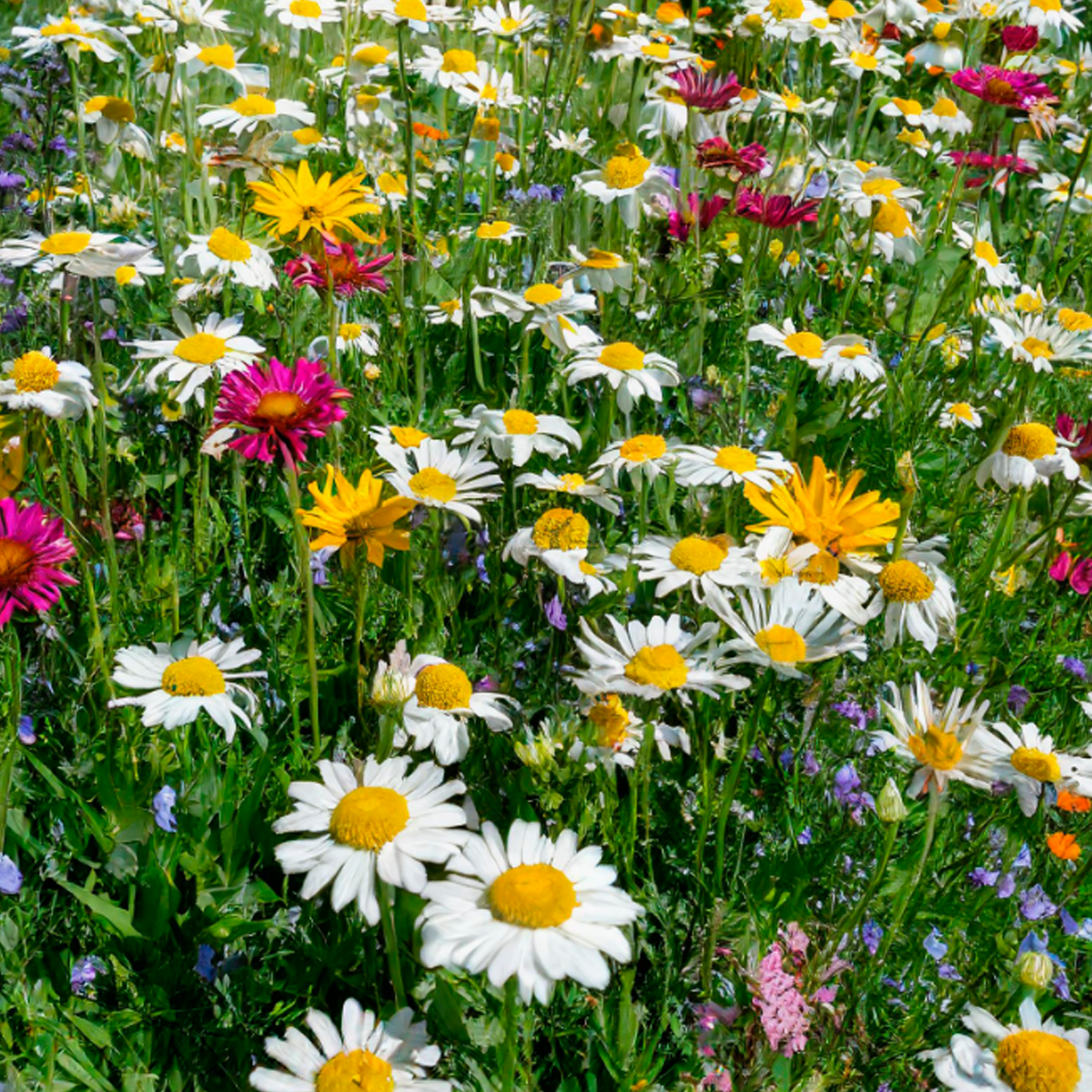
With the right choice, you can bring enduring fire and eternal ice into your garden, or simply opt for a pure and pale planting that will enchant year after year. Here’s a short list of my fifteen favorite white perennials, with something for the most dark-dappled corner or sun-soaked open planting.
Quickly Find White Perennial Flowers:
1. Dianthus (Dianthus chinensis)
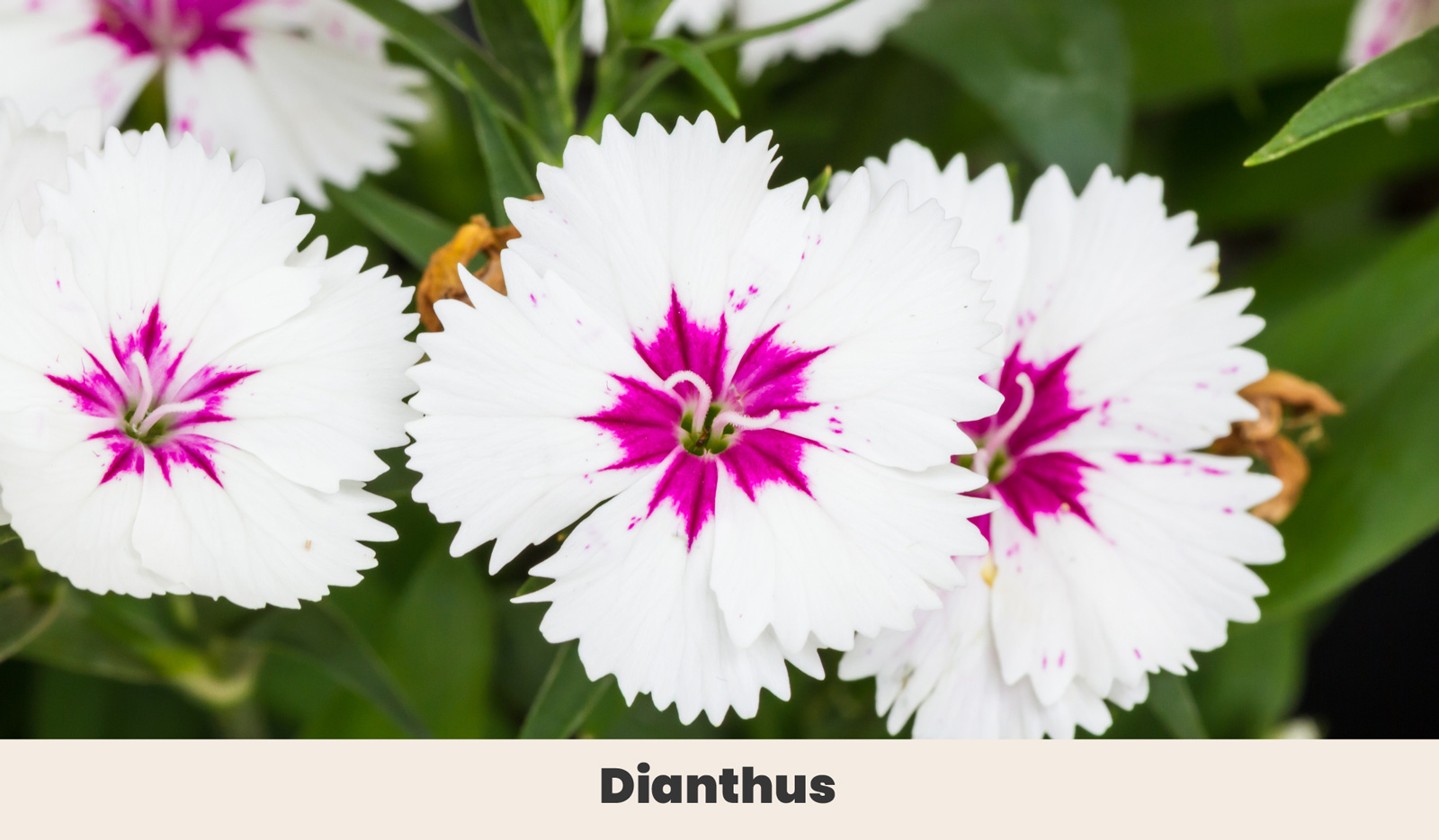
Also known as Chinese pink or French mignonette, this ragged-edged flower produces flowers of pink, red, and magenta ringed in white. The pure white cultivar is rarer but no less spectacular, a delicate disc of white.
Dianthus along with many other carnations have got to be one of my favorite smelling flowers I’ve ever grown. They give off such a sweet aroma that will fill the air with only a few blooms.
| Botanical Name: | Dianthus chinensis |
| Growth Rate: | Moderate |
| Native Range: | Northern China, Korea, Mongolia and southeastern Russia |
| Hardiness Zones: | 6 to 9 |
| Soil Needs: | Well-draining sandy or loamy soils |
| Exposure: | Full sun to partial shade |
| Blooming Period: | Spring to summer |
| Water needs: | Low to moderate |
2. Japanese Anemone ‘Wild Swan’ (Honorine Jobert)
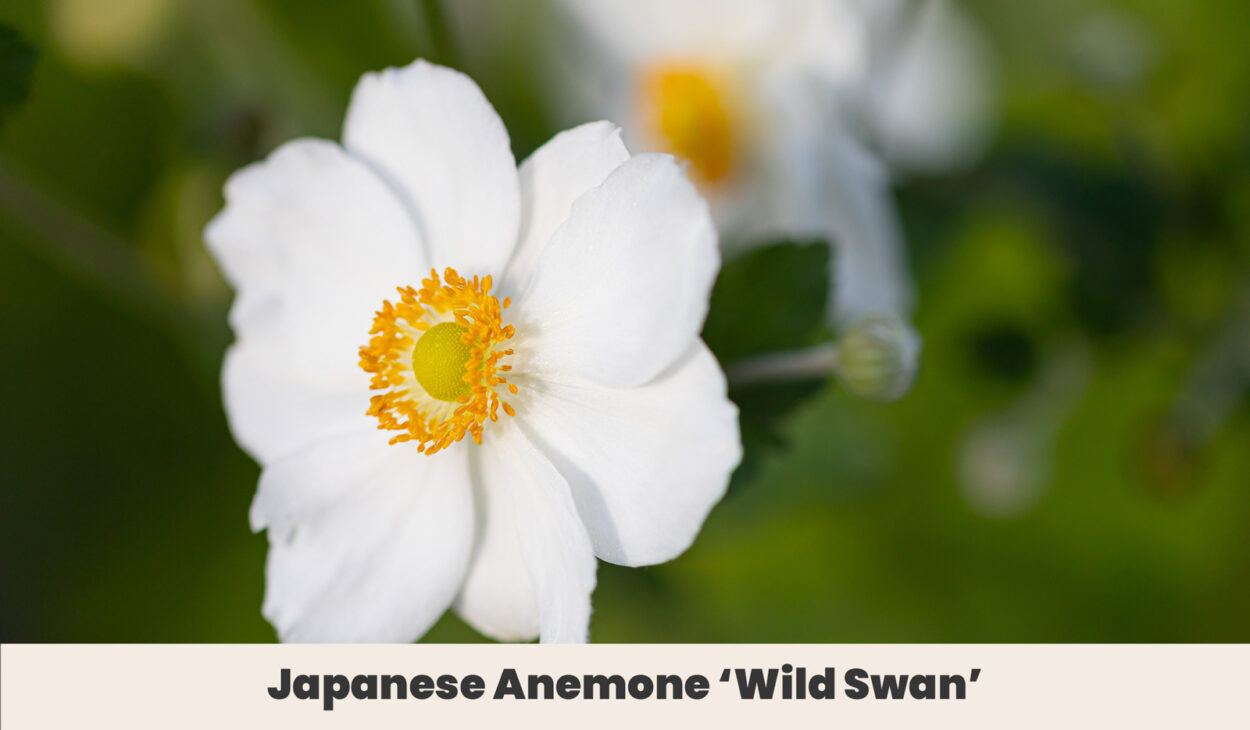
The swaying pale flowers of a planted row of Wild Swan anemones are just as elegant and regal as one would imagine. They’re a specific hybrid of three separate Chinese anemones, originally developed in the French town of Verdun in the mid-19th century.
These low-growing perennials produce tall flower stalks with multiple blooms in each on their own long flower head, giving the illusion of many more plants than the soil truly holds.
| Botanical Name: | Anemone x hybrida |
| Growth Rate: | Fast |
| Native Range: | Man-made hybrid |
| Hardiness Zones: | 4 to 7 |
| Soil Needs: | Moist, organically rich soils of most types, including clay |
| Exposure: | Full sun to partial shade |
| Blooming Period: | Summer to early fall |
| Water needs: | Moderate |
3. Caribbean Spider Lily (Hymenocallis caribaea)
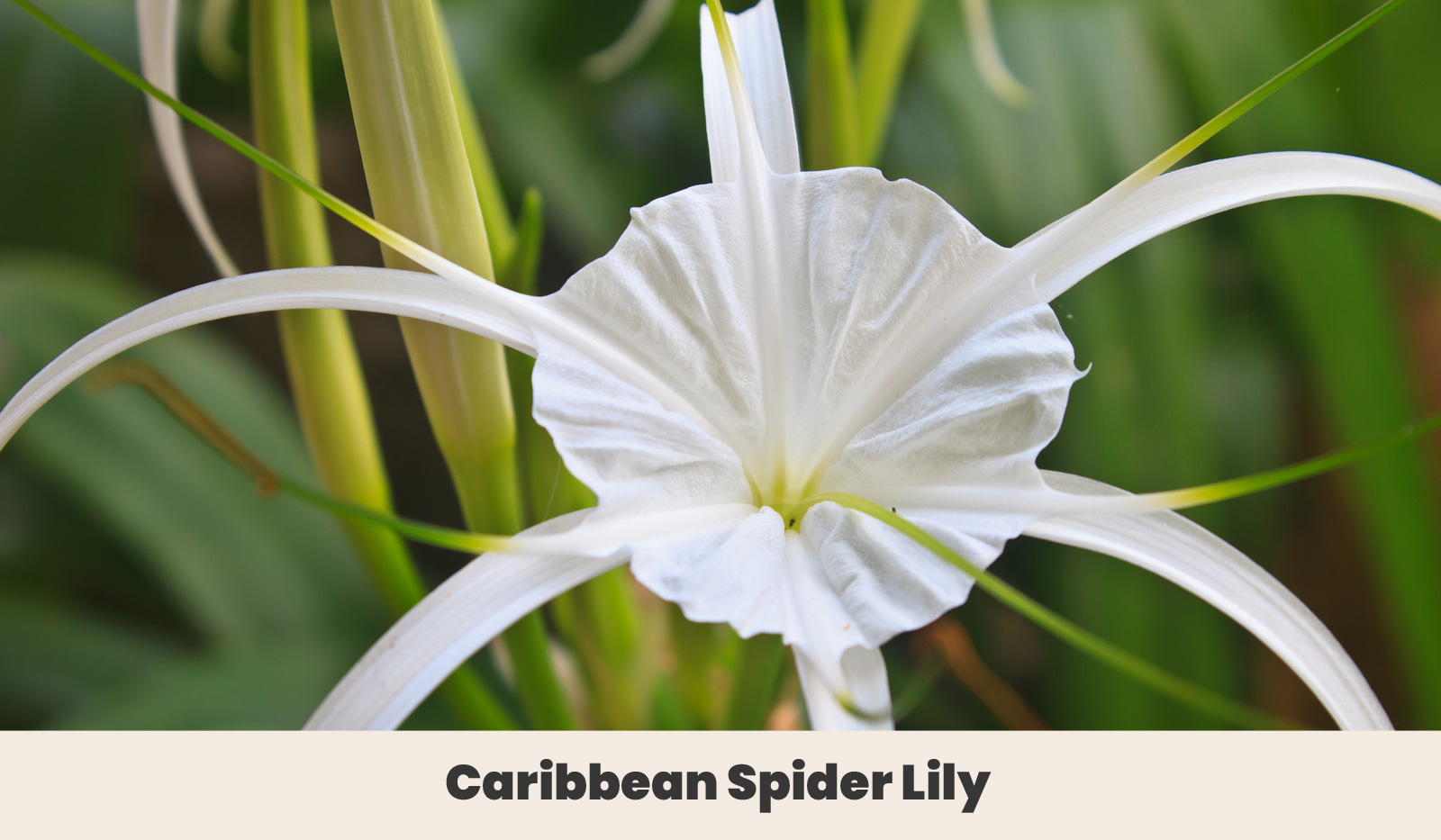
The Caribbean spider lily is an otherworldly flower, with a tall stem topped by a floppy, white disc dripping with evenly spaced tendrils. Like a spider on the beach, it sprawls out and just relaxes. It’s a relaxing choice for those who tend it, too, as it’s fond of wet cool corners that would otherwise be unaccommodating.
| Botanical Name: | Hymenocallis caribaea |
| Growth Rate: | Moderate |
| Native Range: | West Indies |
| Hardiness Zones: | 2a to 11b |
| Soil Needs: | Fertile, well-draining soils of most types |
| Blooming Period: | Summer |
| Water needs: | High |
4. Alexander’s White Candytuft (Iberis sempervirens)
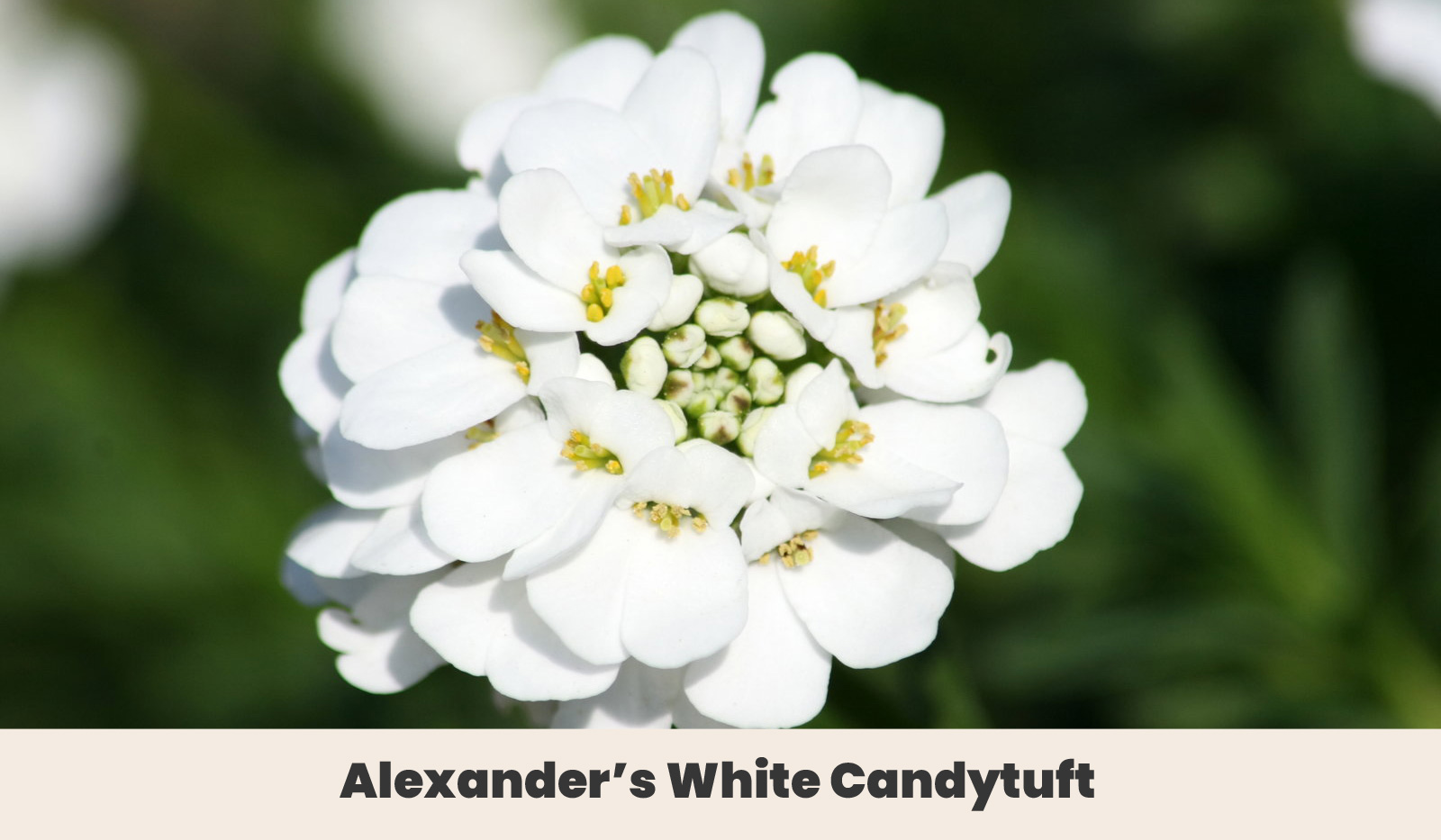
Sweet by name and sweet by nature, candytuft is a lively creeping ground cover with frothy white flowers. While each individual bloom is tiny, they grow in tight clusters and in such profusion, it’s easy to lose sight of the foliage. They make a fantastic container plant, spilling forth over pots or baskets in snowy cascades.
| Botanical Name: | Iberis sempervirens |
| Growth Rate: | Fast |
| Native Range: | Spain and Portugal |
| Hardiness Zones: | 3 to 8 |
| Soil Needs: | Will tolerate most soils if drainage needs are met |
| Exposure: | Full sun |
| Blooming Period: | Spring |
| Water needs: | Moderate |
5. Shasta Daisy (Leucanthemum × superbum)
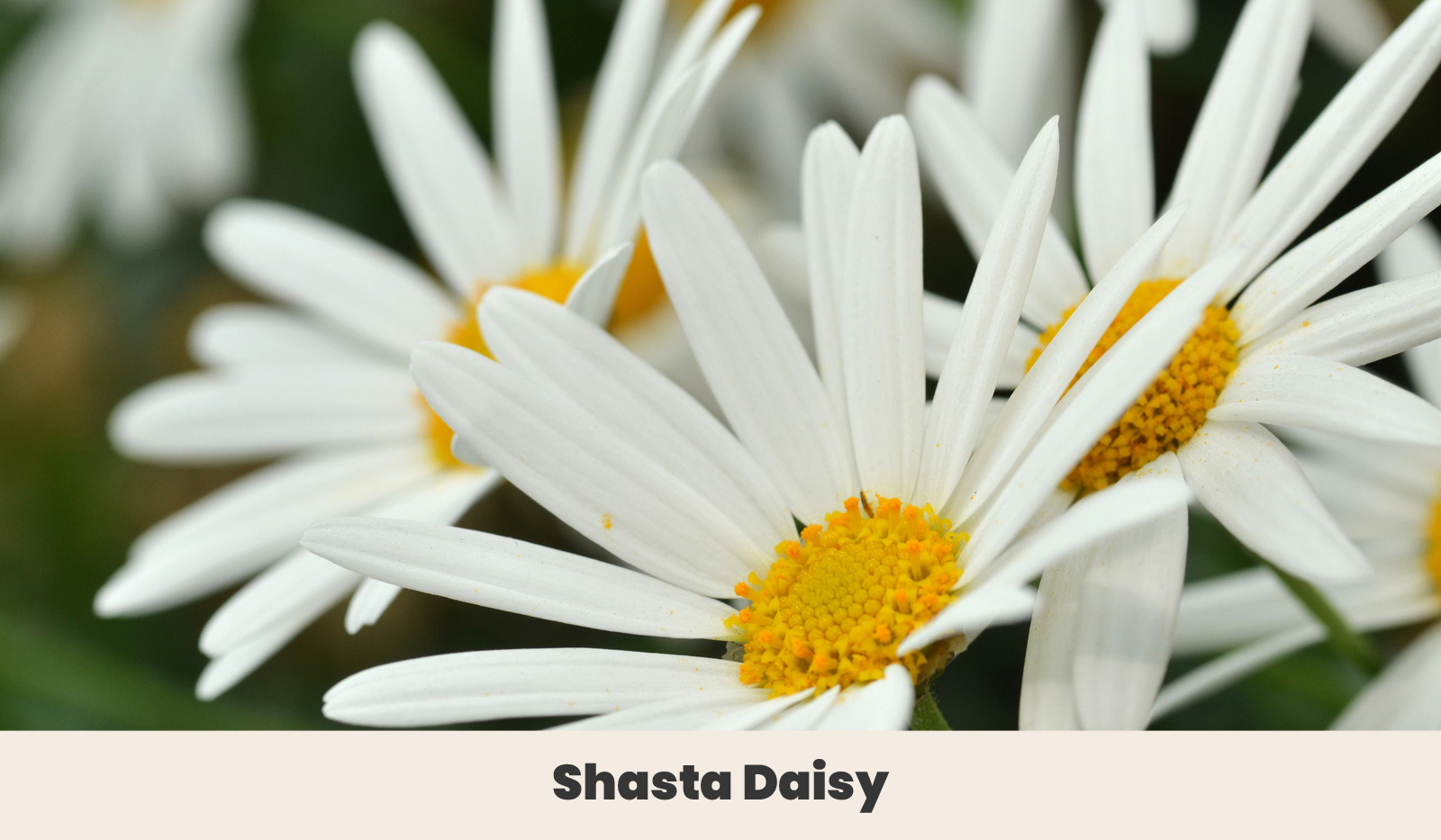
It’s really hard to improve on the shasta daisy. In fact, many simply call it a daisy, the classic yellow heart fringed in cheerful white petals. They’re a cottage garden favorite for good reason, as they are easy to grow and easy to appreciate.
They thrive in most soil types with very little supplemental watering and will encourage visits from all manner of butterflies and bees. They also make a fantastic cut flower that lasts a surprising amount of time in the vase, a little ray of sunshine brought into the home.
| Botanical Name: | Leucanthemum × Superbum |
| Growth Rate: | Moderate |
| Native Range: | Hybrid; no natural range |
| Hardiness Zones: | 4 to 9 |
| Soil Needs: | Moist, well-draining, tolerates sand, loam, clay |
| Exposure: | Full sun to partial shade |
| Blooming Period: | Spring, summer |
| Water needs: | Low |
6. White Common Yarrow (Achillea millefolium)
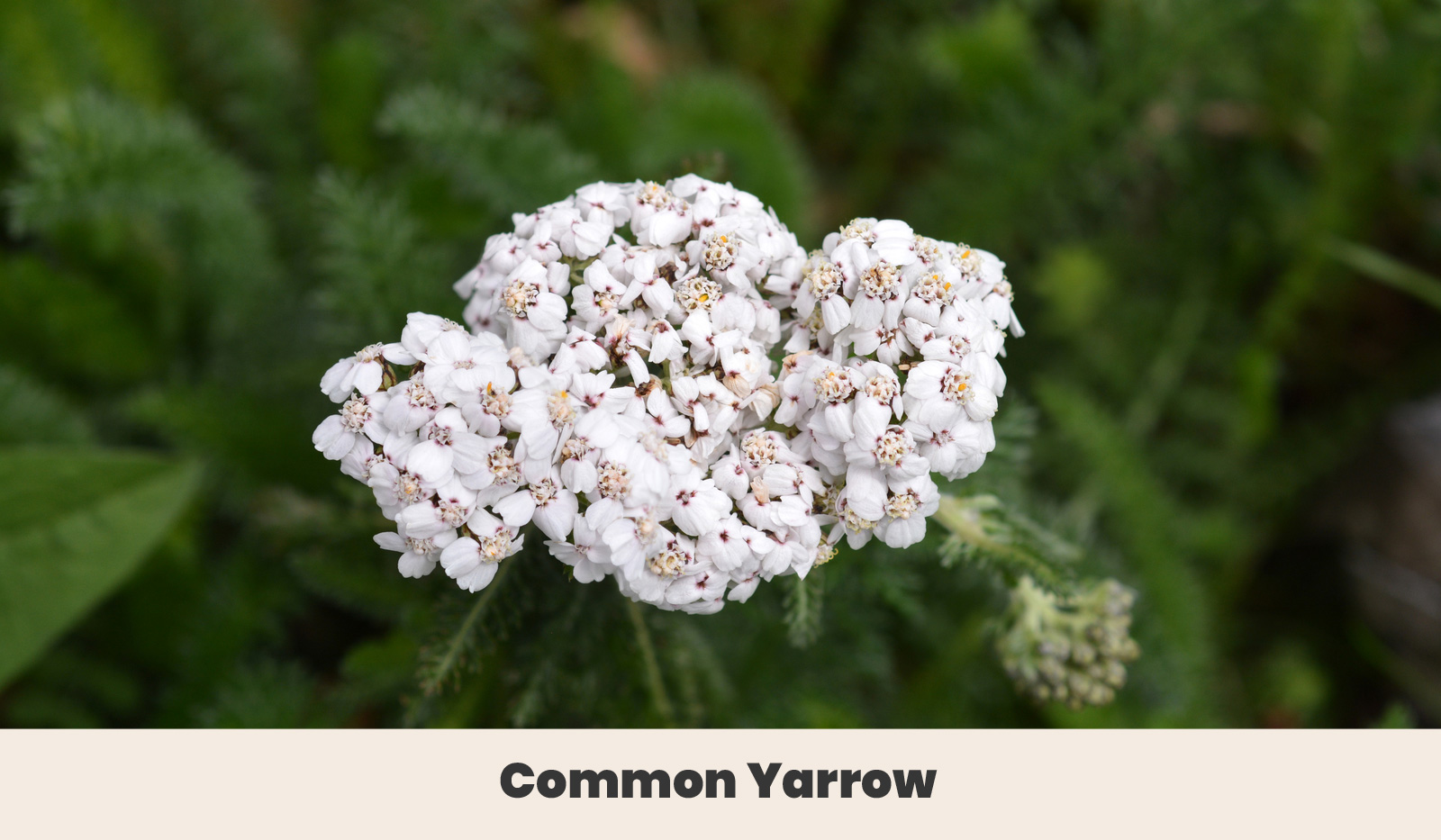
White yarrow has a special place in my heart for it’s easygoing nature and its nonchalant, nodding heads. Each cluster contains dozens of dainty flowers, and the whole display can reach three feet or so.
They’re hardy as hell and will even thrive as a lawn alternative in low-traffic areas and even benefit from being mowed to a low fuzz as the summer comes to a close.
| Botanical Name: | Achillea millefolium |
| Growth Rate: | Slow to moderate |
| Native Range: | Europe, Western Asia |
| Hardiness Zones: | 3a to 9b |
| Soil Needs: | Well-draining loam or sand with abundant organic matter |
| Exposure: | Full sun |
| Blooming Period: | Summer |
| Water needs: | Low to moderate |
7. Peony (Paeonia japonica)
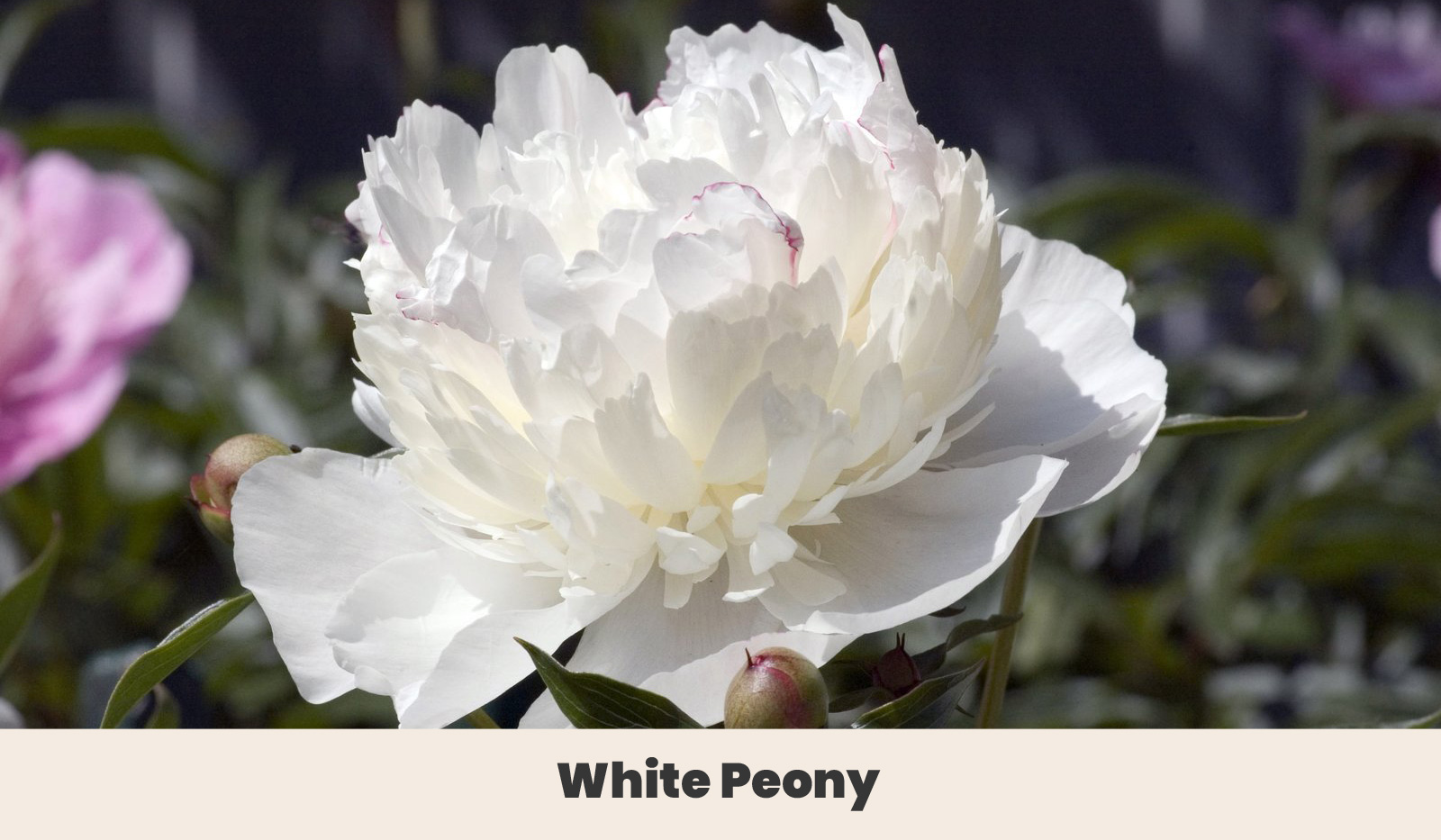
A well-loved peony is a long-lived plant, a woodland species that has adapted to garden cultivation with gusto. The plant grows from a rhizome that can live for decades, sending up fast-growing, lush green leaves each spring to form a tight shrub.
The flowers follow, fragrant enough to turn a whole garden into a perfumed wonderland, big, blowsy, and bright. They make spectacular cut flowers that carry their fantastic fragrance indoors with them, though be wary of ants – they find the flowers as irresistible as we do.
| Botanical Name: | Paeonia japonica |
| Growth Rate: | Fast |
| Native Range: | Japan |
| Hardiness Zones: | 5 to 8 |
| Soil Needs: | Organically rich, moderately moist soil |
| Exposure: | Partial shade |
| Blooming Period: | Spring |
| Water needs: | Moderate |
8. Water Arum (Calla palustris)
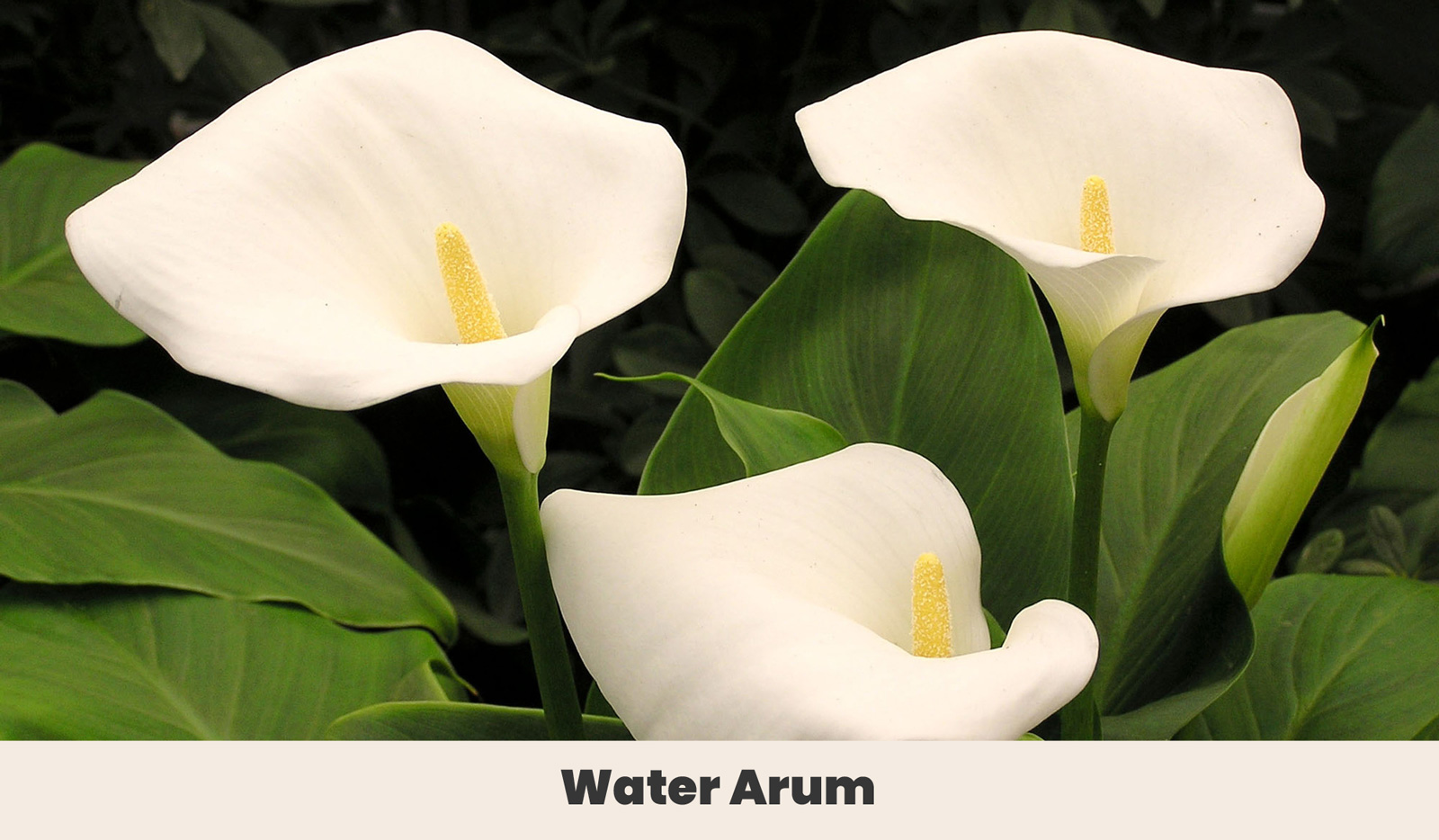
The water arum is a semi-aquatic species that loves the shallow margins of ponds and streams, fanning its glossy heart-shaped leaves out over babbling brooks. The flowers are a delight, a single creamy spathe around a perky spadix in shades of gold and green.
If they’re lucky enough to be fertilized the spadix matures into a ruby red cluster of berries that will in time drop into the water.
| Botanical Name: | Calla palustris |
| Growth Rate: | Slow |
| Native Range: | Europe through Asia to Japan, sub-Arctic United States. |
| Hardiness Zones: | 2a to 6b |
| Soil Needs: | Semi aquatic, very wet soils of all types |
| Exposure: | Partial shade |
| Blooming Period: | Spring to summer |
| Water needs: | Very high |
9. Bear’s Breeches (Acanthus mollis)
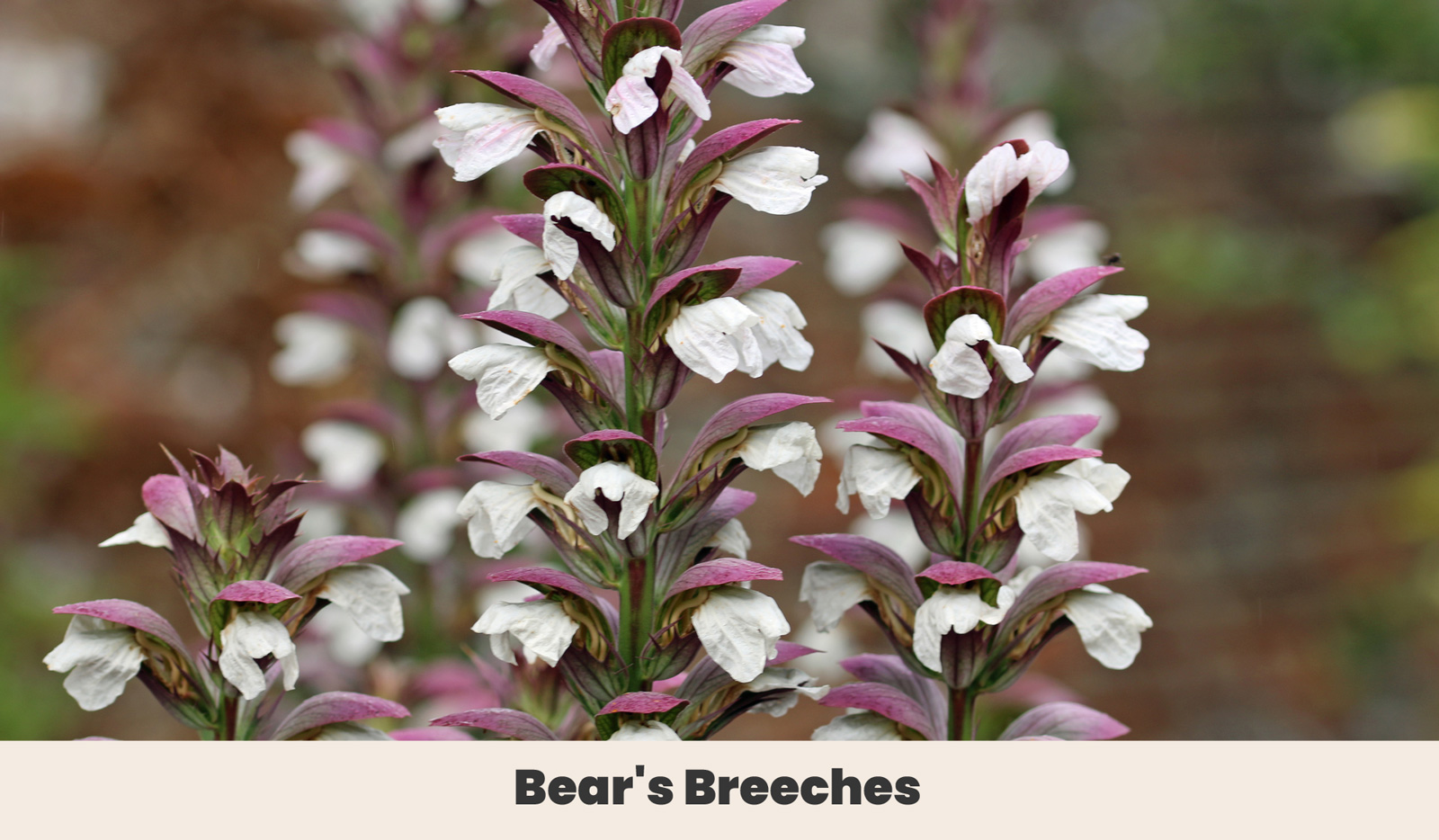
Tall and striking, the flowering spires of the bear’s breaches reach six feet in height, an ever-expanding spire of pale flowers that open in sequence from the bottom up.
Like the bear of its name, the bear’s breeches spreads wherever it pleases via a sturdy rootstock that expands and sends out runners. It’s a good idea to plant in contained areas or with a root barrier as often is suggested for bamboo.
| Botanical Name: | Acanthus mollis |
| Growth Rate: | Can become invasive, and spines |
| Native Range: | Europe and Africa |
| Hardiness Zones: | 7a to 10b |
| Soil Needs: | Organically rich, well draining soils of most types |
| Exposure: | Full sun to partial shade |
| Blooming Period: | Spring to summer |
| Water needs: | Moderate, drought resistant once established |
10. Lily of the Valley (Convallaria majalis)
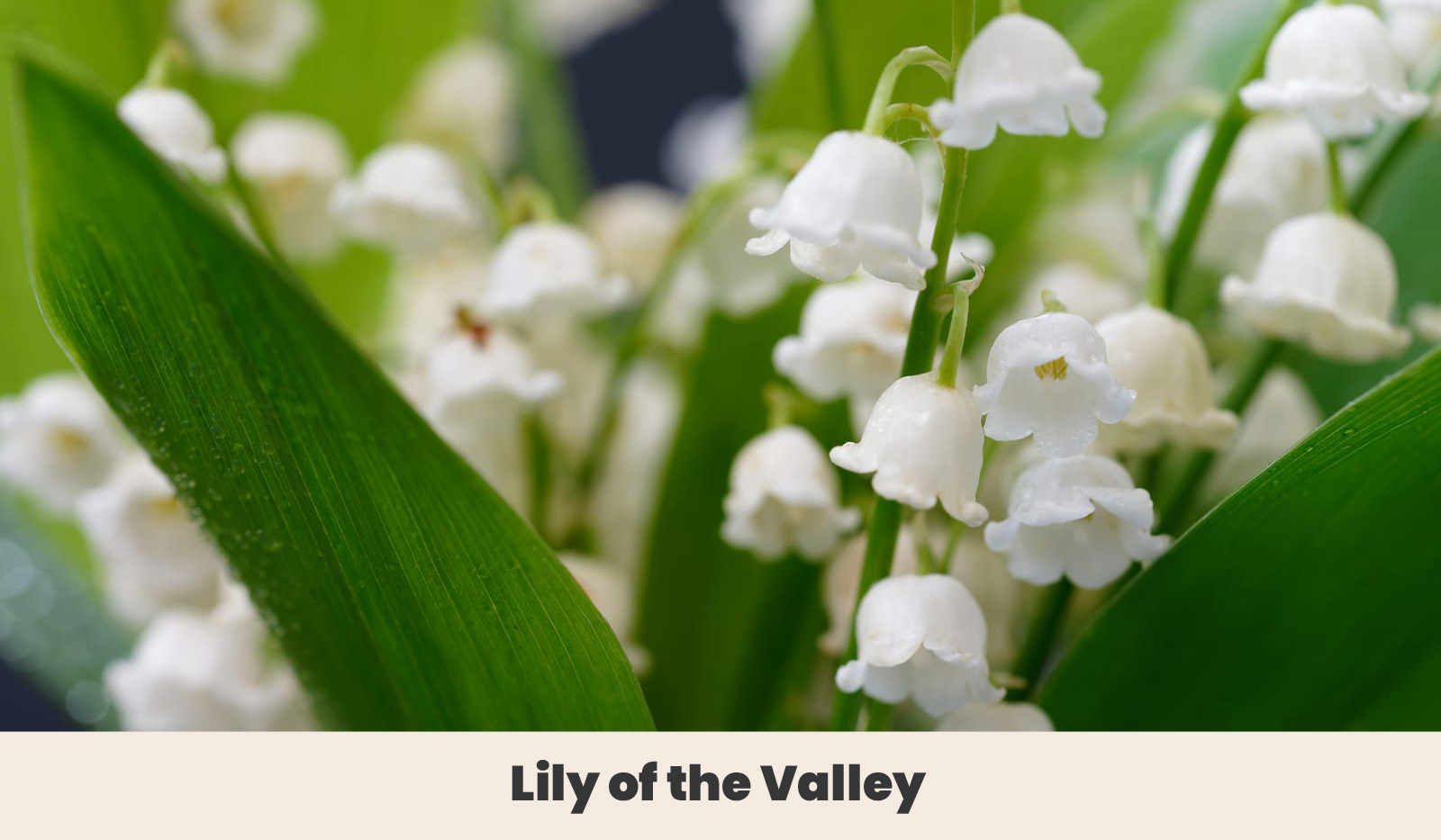
The darling bell-shaped flowers of the Lily of the Valley is a long-time favorite of shaded cottage gardens and bridal bouquets alike. Each blossom is delicately suspended from an arching stem, almost translucent in its pallor and heavenly in its scent.
The bloom has long symbolized a return to happiness, and it’s also said to attract fairies with its frail white bells. It’s certainly an attractive plant for the gardener, as it will grow in heavy clay, and shadowy corners and is a largely untroubled pest of all types, including deer and rabbits.
| Botanical Name: | Convallaria majalis |
| Growth Rate: | Moderate |
| Native Range: | Europe and Asia |
| Hardiness Zones: | 3 to 8 |
| Soil Needs: | Moist, organically rich soils with good drainage |
| Exposure: | Partial sun to deep shade |
| Blooming Period: | Late spring |
| Water needs: | Moderate, drought resistant once established |
11. Snowdrops (Galanthus nivalis)
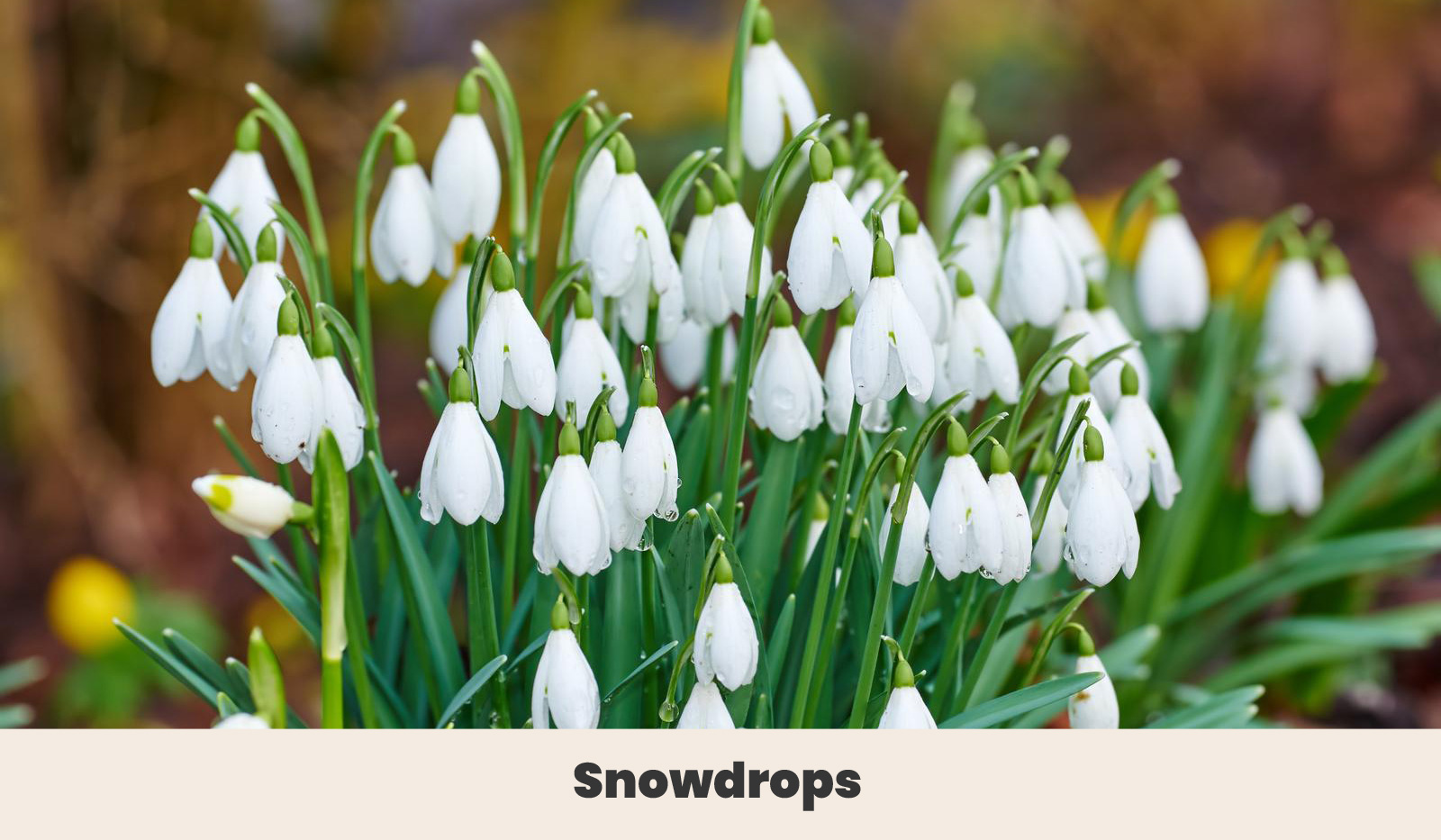
Snowdrops are little miracles, forcing their fragile white blooms through frozen soil and the last of the winter snow. They are the power of the coming spring, so gentle and unstoppable.
Each bulb produces a single milky flower, but they are capable of spreading rapidly via seed and offset to produce awe-inspiring displays of vitality as the hard cold nights of winter come to their close.
| Botanical Name: | Galanthus nivalis |
| Growth Rate: | Moderate |
| Native Range: | Europe and Southwestern Asia |
| Hardiness Zones: | 3 to 8 |
| Soil Needs: | Fertilize annually with balanced slow-release granules |
| Exposure: | Full sun to partial shade |
| Blooming Period: | Winter to early spring |
| Water needs: | Low |
12. Creeping dogwood (Cornus candensis)
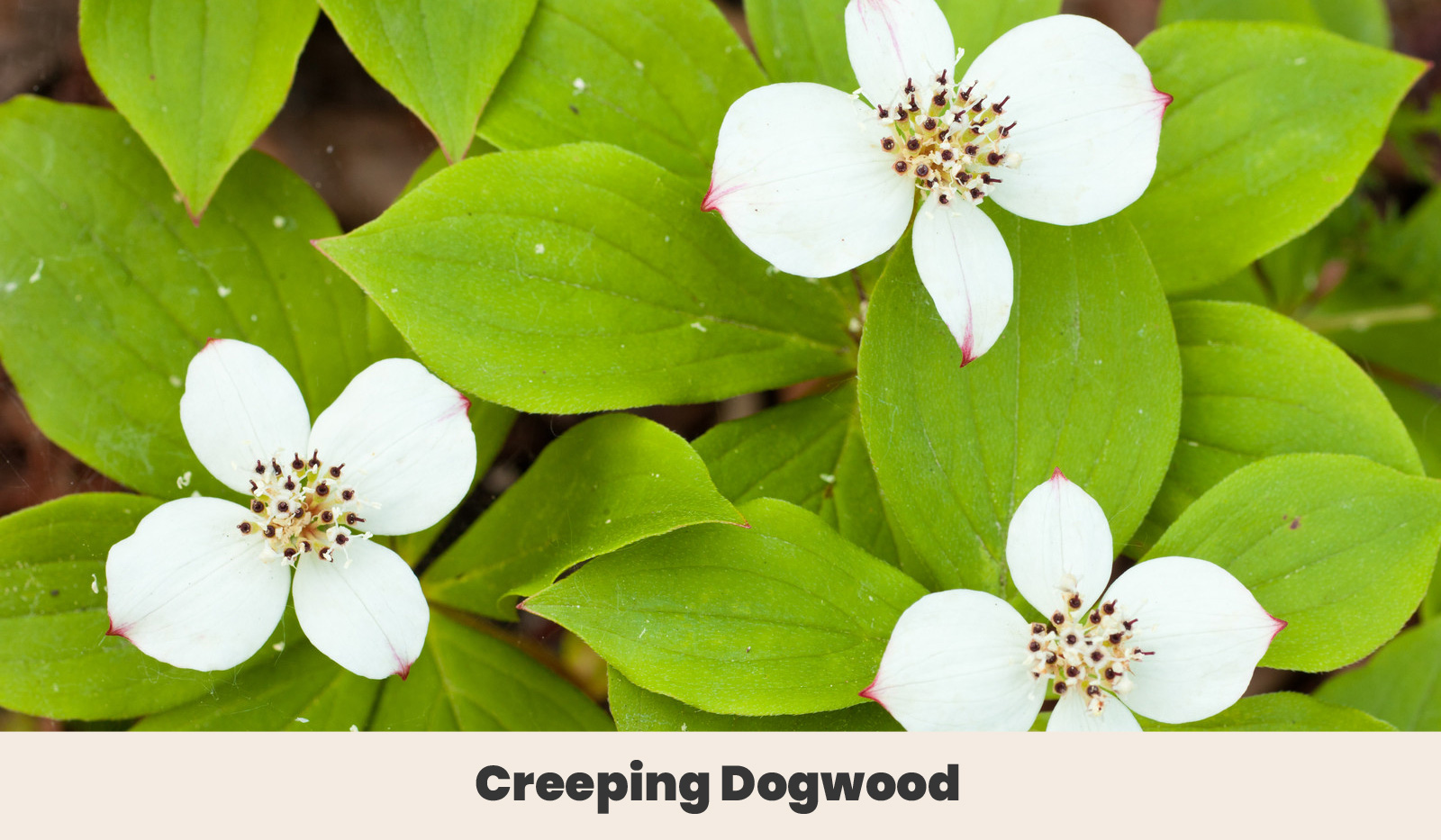
Also known as Canadian dogwood or bunching dogwood, this American native is a low ground cover with lively green overlapping foliage and perky four-petaled flowers. It’s easy to spot a dogwood once you become familiar with the bulbous shape of its petals. Even this creeping variety shows its true colors in bloom.
They love the cool shade of a forest under-story, where their white flowers shine in like tiny stars that mature to a cheerfully bright red berry. Besides the obvious lure of nectar and fruit, the creeping dogwood forms low, dense thickets that are perfect for nesting birds.
| Botanical Name: | Cornus candensis |
| Growth Rate: | Slow |
| Native Range: | Eastern Russia to Japan, North and Central United States. |
| Hardiness Zones: | 2a to 6b |
| Soil Needs: | Moist, well draining soils of most types |
| Exposure: | Partial sun to dappled shade |
| Blooming Period: | Spring to summer |
| Water needs: | Moderate |
13. Meadow Rue (Thalictrum aquilegiifolium)
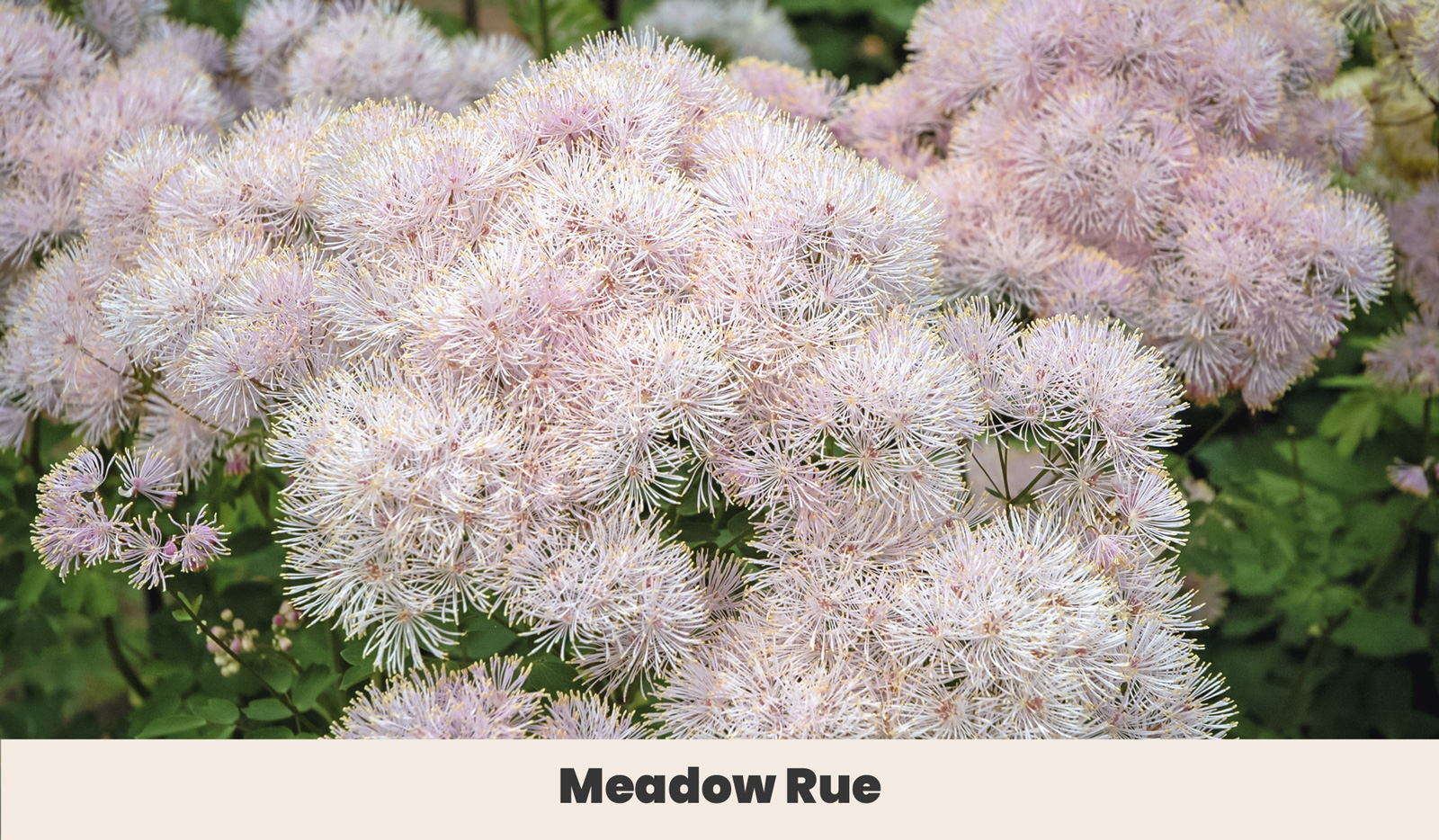
Less common than the purple varieties, a wide planting of white meadow rue is a captivating meadow feature. So delicate are its leaves that it’s sometimes confused with maidenhair ferns, and its cloudlike blooms only emphasize its airy appearance.
They form loose displays, with many pop-pop-like blossoms on each tall stalk. Unlike many tall growing plants of a slim profile, the meadow rue requires no stalking and will keep its head high no matter the weather.
| Botanical Name: | Thalictrum aquilegiifolium |
| Growth Rate: | Moderate |
| Native Range: | Europe to Central Asia |
| Hardiness Zones: | 5a to 8b |
| Soil Needs: | Moist, organically rich soils of most types |
| Blooming Period: | Late spring to early summer |
| Water needs: | Moderate |
14. Columbine (Aquilegia coerulea var. ochroleuca)
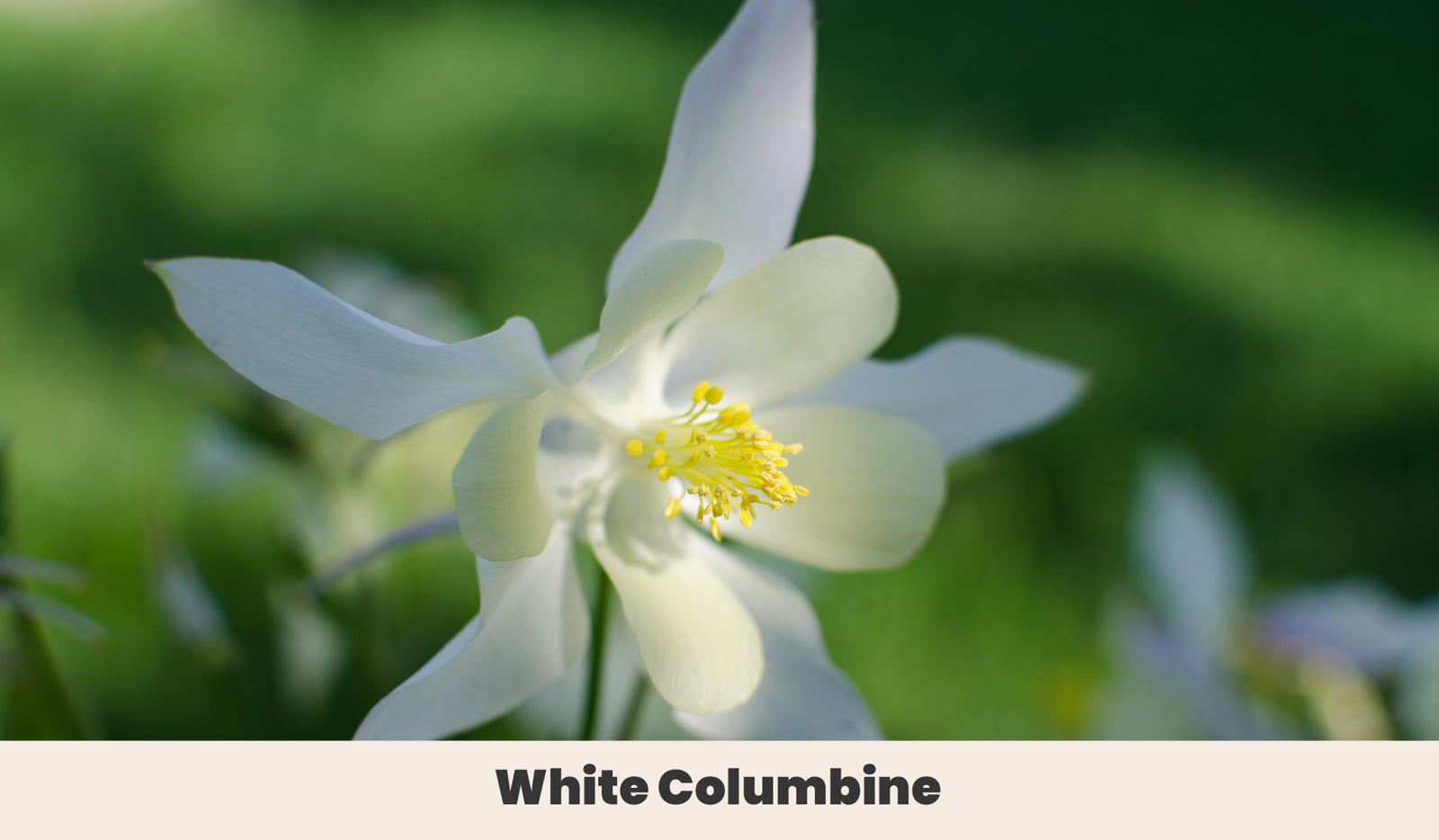
The Columbine is a shooting star, a radiant heart trailing long spurs of white behind. A Native American wildflower, it produces flowers that range from purple to pink and onward to the most astounding spectacular pure white cultivars.
They’re commonly found in rocky meadows through Colorado and Utah and are a fantastic choice for gardens afflicted with stony or sandy soil. They are far less fussy than their ethereal flowers would suggest and will self-seed so thoroughly that you’ll see them spring up year after year.
| Botanical Name: | Aquilegia coerulea var. ochroleuca |
| Growth Rate: | Moderate |
| Native Range: | Northwestern United States |
| Hardiness Zones: | 3 to 7 |
| Soil Needs: | Well draining sandy or rocky soils |
| Exposure: | Full sun to partial shade |
| Blooming Period: | Summer |
| Water needs: | Moderate |
15. Christmas Rose (Helleborus niger)
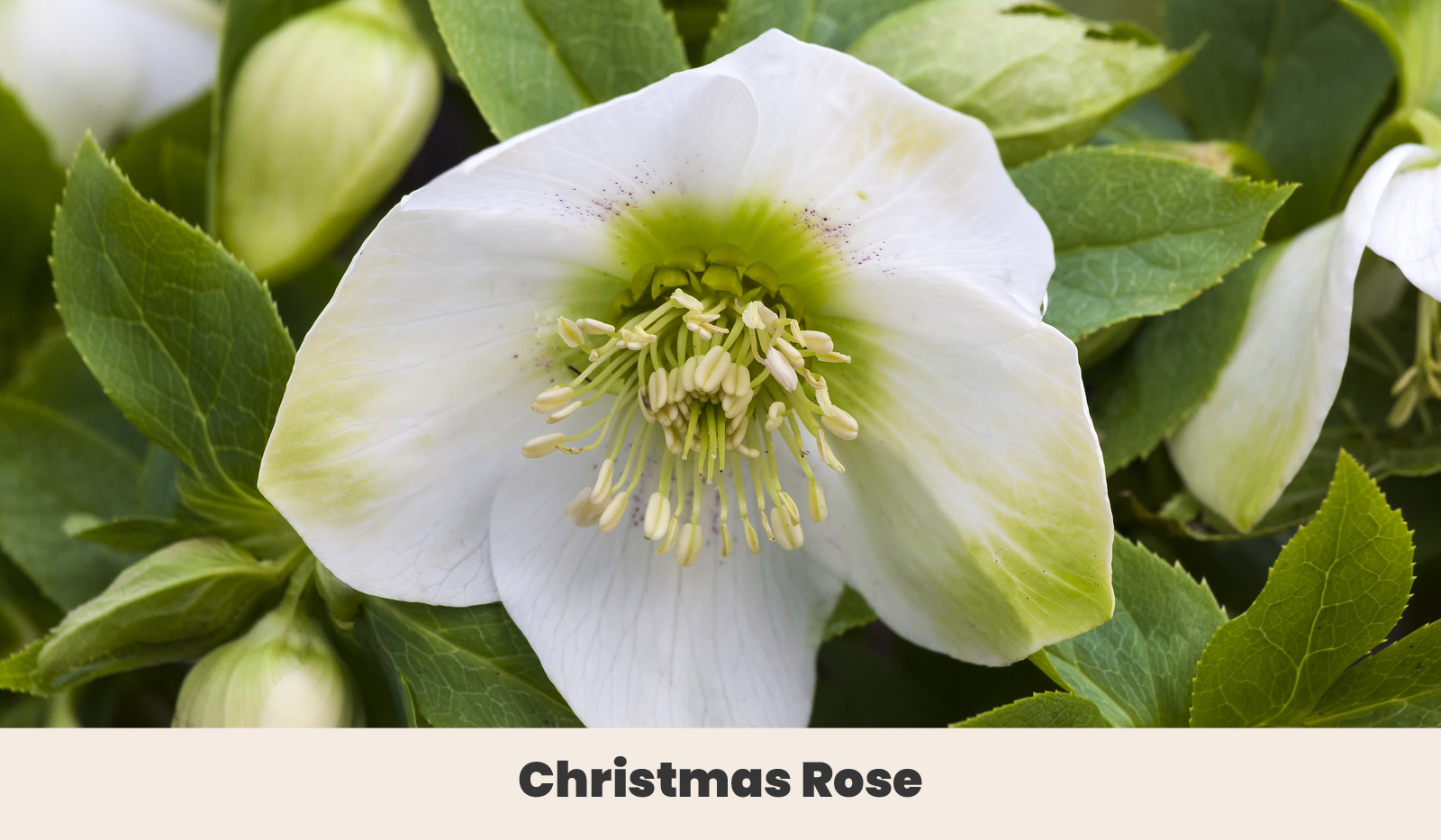
The Christmas Rose is a festive miracle, a blowsy bloom that appears each December like a visiting member of the family. The plant itself is low-growing and shrubby, no more than a foot tall, yet is able to produce huge bowl-shaped white blossoms at the height of the holiday season.
They are spectacular cut flower, especially when floated in a bowl of water or woven through garlands of ivy.
| Botanical Name: | Helleborus niger |
| Growth Rate: | Slow |
| Native Range: | Central and Southern Europe |
| Hardiness Zones: | 3a to 8b |
| Soil Needs: | Well draining, organically rich soils |
| Exposure: | Partial to deep shade |
| Blooming Period: | Late winter to early spring |
| Water needs: | Moderate |
Final thoughts
I love the refined charm of white blossoms swaying in the breeze, dappled over a wildflower meadow, or clustered by a pond or water feature. They spill in snowy profusion from hanging baskets and gather around the rockery, enduring and reliable year after year.
I hope you were able to find a white flower that would be welcomed into your own garden. If not please let me know in the comments below. I’m always looking for ways to improve these posts, together we can inspire others to grow more flowers.
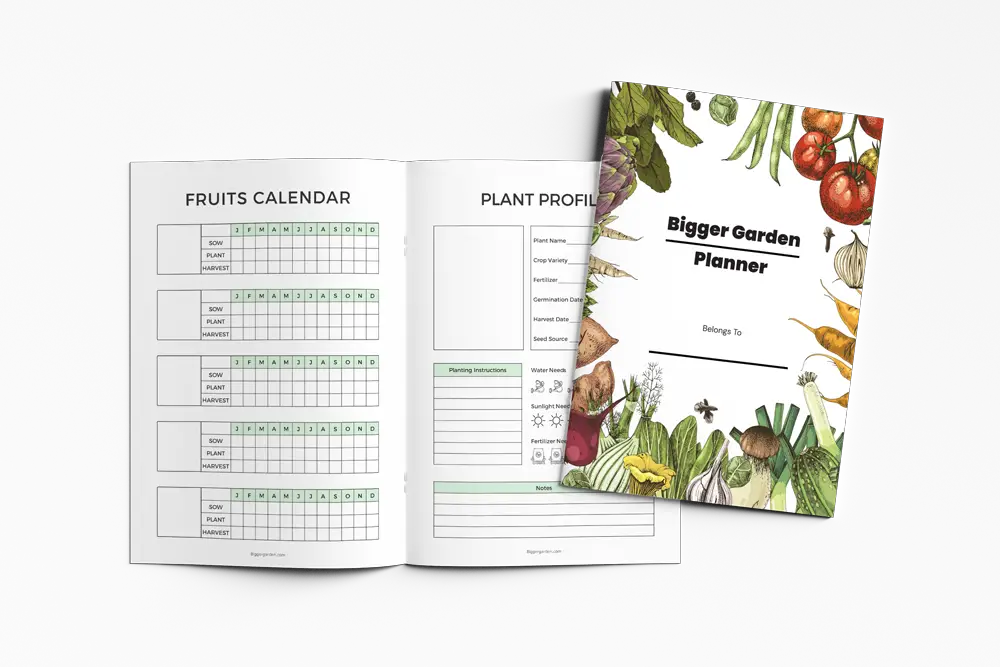
Before you go!
11 Types Of Wildflowers That Will Grow In Your Zone + Growing Guides
The Diverse World Of Dahlias: Explore these Cultivars for spring
11 Bell-Shaped Flowers: Your Guide to Breathtaking Blossoms
12 Different Flowers That Look Like Daisies